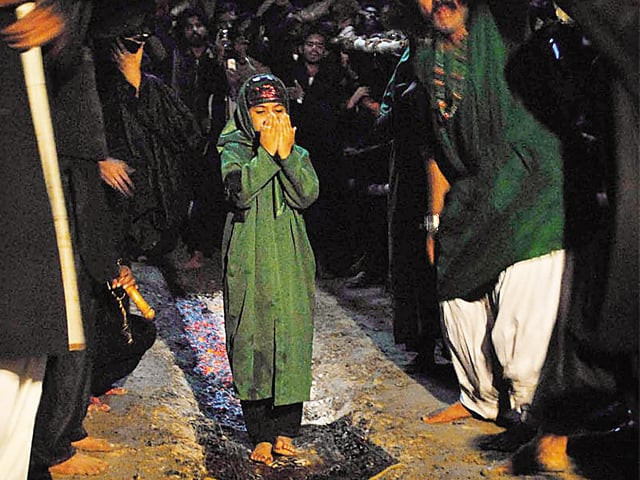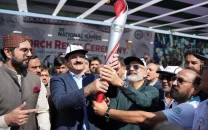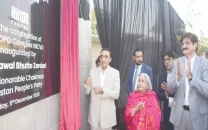Ashura: Fearless Hyderabad girls pray on hot ashes
Standing on the cooling ashes, Marhaba and Asba bend to prostrate on the 15-foot-long path lined with embers.

Hundreds of mourners shouted ‘Ya Hussain, Ya Hussain’ (RA) as the young girls performed their Fajr prayers on the strip laid out in Naseem Nangar, Hyderabad on Muharram 8 to commemorate the sacrifices of Imam Hussain (RA) and other martyrs of Karbala. The girls remained safe and after the prayers, the rest of the mourners, dressed in black and green, walked barefoot over the ashes.
The ceremony was organised in Rashid Shah’s haveli, where a 15-foot-long, three-foot-wide and four-foot-deep trench was dug and then filled with wood. Similar rituals are held across Sindh from Muharram 8 to 10.
Ghulam Hussain, a primary teacher of Dadu district, goes to Tando Jahanian in Hyderabad every year to participate in the ‘mourning on burning ashes’. Thousands of mourners take part in the procession at Tando Jahanian on Muharram 8 as well.
Hussain recalled how he hurt his feet the first time he walked on the flaming ashes but now, he said, nothing happens to him. All he feels is a gentle warmth on his soles.
“It is a different kind of event. Mourners shout ‘Ya Hussain, Ya Hussain’ (RA) while walking on the ashes. The first time I walked on it was 10 years ago and I fell down. The person behind me crashed into me so I sustained some burns,” he recalled.
This kind of mourning ritual started in Sindh from Hyderabad, about 50 years ago. Now it has spread to others districts, including Matiari, Sanghar, Kamber-Shahdadkot, Jacobabad and Larkana.
Professor Zawar Naqvi, a Sindhi writer and the provincial secretary of the Abadi Board, Jamshoro, said his forefathers are pioneers of the mourning on burning ashes or ‘Aag ka Maatam’. He claims they started it in the early 1940s.
Talking to The Express Tribune, he said his grandfather, Syed Dadan Shah, initiated it and for the tradition to be completed, about seven to 14 people have to take part. These people are called “grooms”, explained Naqvi. The mourners volunteer to walk and request to be nominated for this honour, he added.
“We dig a 20-foot-long and 10-foot-deep trench and fill it with pieces of wood on the morning of Muharram 7. We set the wood on fire and by the end of the night, it turns to ashes.
The grooms take a purification bath, wear green clothes, offer Fajr prayers and recite Surah Ibrahim from the Holy Quran and start walking on the ashes,” Naqvi said.
The ritual lasts for 20 to 30 minutes. However, since thousands of people gather and wish to participate in the event, it is not possible for them to stop anyone from taking part.
When asked about the green clothes, Naqvi said they preferred to wear this colour because it was the colour of the mosque of the Holy Prophet Muhammad (peace be upon him).
“The followers of Imam Hussain (RA) shout slogans recalling the event of Karbala and nothing happens to them. This is an example of their love for the martyrs,” he said.
Published in The Express Tribune, December 17th, 2010.



















COMMENTS
Comments are moderated and generally will be posted if they are on-topic and not abusive.
For more information, please see our Comments FAQ